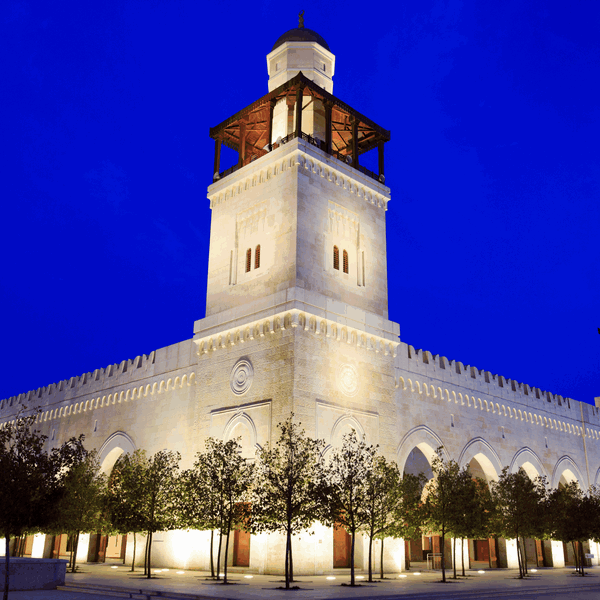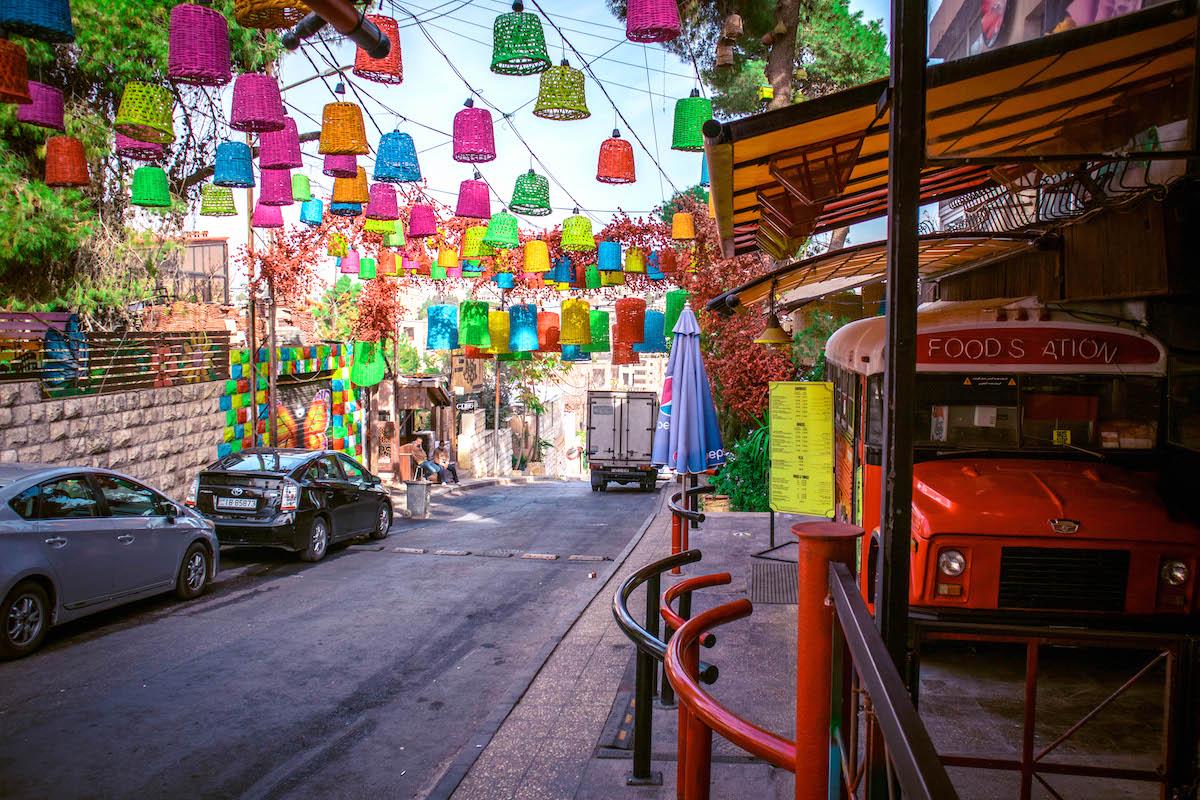Embarking on a journey through Jordan is akin to turning the pages of a living history book, each chapter bursting with ancient tales and natural wonders. Are you ready to set your own story amongst the dunes and ruins?
Jordan beckons with promises of adventure and enlightenment.
As of March 6, 2023, the Jordanian tapestry of experiences has been meticulously woven to immerse each traveler in a blend of Middle Eastern hospitality and wonder.
Historical Marvels of Petra
Petra, the ancient Nabatean Kingdom, stands as a testament to human ingenuity and architectural mastery. Carved into the rose-red cliffs thousands of years ago, the city’s ruins offer a compelling glimpse into the past.
In its prime, Petra flourished as a bustling trading hub and cultural melting pot, reflecting influences from across the Middle East. Remarkably preserved, the Al-Khazneh (“The Treasury”) and the Monastery illustrate the sophisticated artistry and engineering of its constructors.
The city’s “Siq” and “Royal Tombs” further reaffirm Petra’s significance as an archeological treasure and a pinnacle of Jordan’s cultural heritage.
Journey Through the Siq to Al-Khazneh
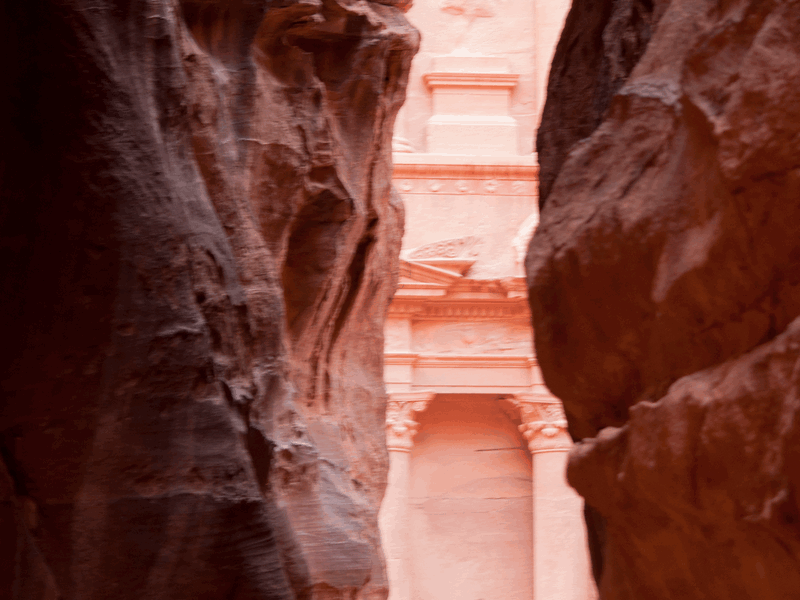
The Siq, a dramatic sandstone gorge, guides visitors towards Petra’s most iconic symbol, Al-Khazneh.
Al-Khazneh was originally built as a mausoleum and crypt at the beginning of the 1st century AD.
As the path narrows, anticipation mounts, framed by towering cliffs streaked with colors from rose-pink to deep ochre, culminating in the breathtaking view of Al-Khazneh’s façade.
Here, intricacies of Hellenistic architecture blend with Nabatean craftsmanship, revealing meticulous details that echo the grandeur of an erstwhile thriving civilization.
Exploring the Royal Tombs and Monastery
In Petra, the Royal Tombs stand as a testament to Nabatean ingenuity and their reverence for the afterlife.
- The Urn Tomb – characterized by its massive facade and impressive interior chamber.
- The Silk Tomb – notable for its rich, multi-colored sandstone patterns.
- The Corinthian Tomb – amalgamating Nabatean and Roman architectural styles.
- The Palace Tomb – distinguished by its multiple stories emulating a palatial structure.
- Ascend to the Monastery – a challenging but rewarding trek leading to one of Petra’s most monumental structures.
This cluster of monumental tombs highlights the cross-cultural interactions that influenced Nabatean art and architecture.
The upward journey to the Monastery (Ad-Deir) rewards intrepid explorers with profound insights into the monastic life and spiritual pursuits in ancient times.
Wonders of the Wadi Rum Desert
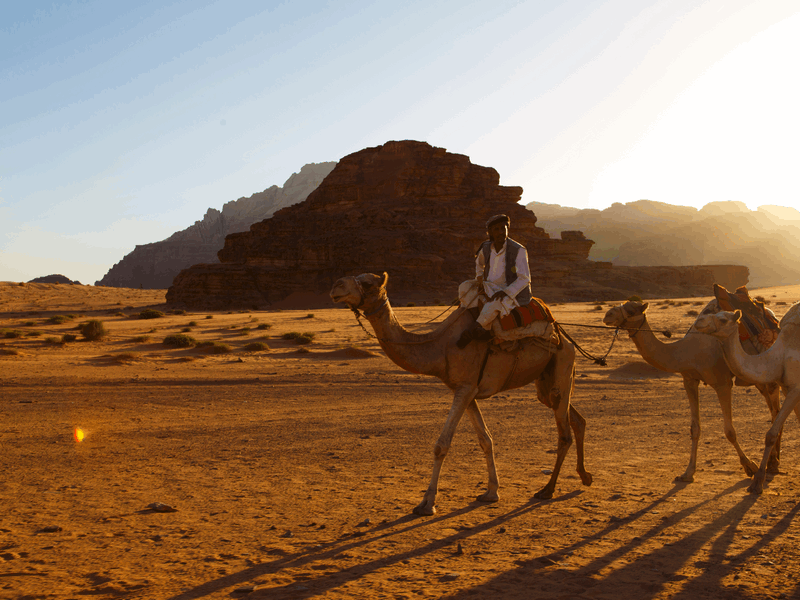
Delve into a vista of breathtaking nobility within the Wadi Rum, often referred to as the “Valley of the Moon.” This expanse unveils a surreal landscape shaped by eons, where monumental rock formations rise abruptly from the rose-red sands. Under the vast desert canopy, the silence whispers tales of the ancient traders and explorers who once traversed this Martian terrain.
Venture beyond mere sightseeing; Wadi Rum invites a deeply immersive experience, bordering on metaphysical. Travellers might elect to engage in a traditional Bedouin camp stay or glide over the undulating dunes in a hot air balloon at dawn. Each activity is an opportunity to connect with the timeless essence of the desert, and to gaze upon the natural rock bridges and inscriptions, evidence of the desert’s historical and geological narrative.
Bedouin Jeep Adventures
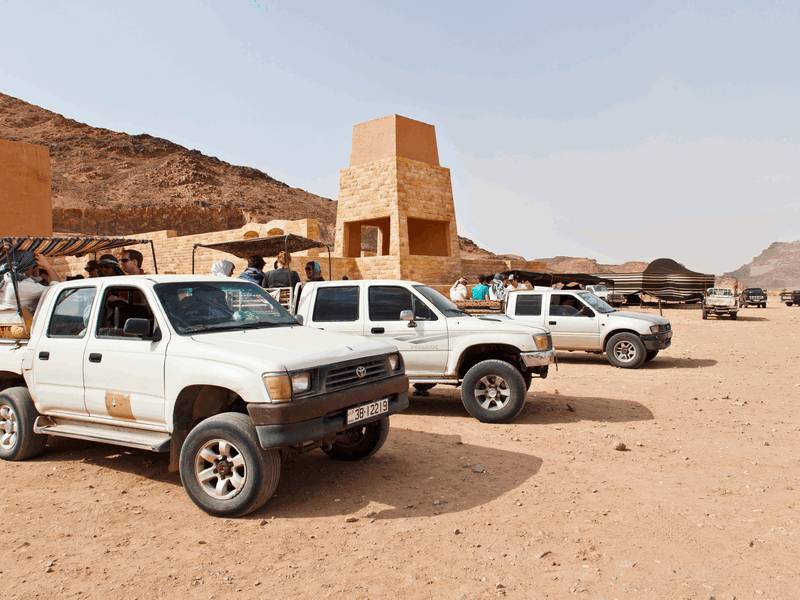
Embarking on a Bedouin Jeep tour in Wadi Rum offers more than just transit—it represents an authentic venture into Bedouin culture and desert life.
Accelerate through time across ancient desert paths where history whispers around every dune.
Led by indigenous Bedouin guides, these adventures present an unparalleled exposition of Wadi Rum’s dramatic landscapes, steeped in the rich tapestry of Bedouin traditions and anecdotes that bring the desert’s history to vivid life.
The vehicles used in these excursions are traditionally open-top, offering unfettered views of the stretching vistas. Venturers can expect an adrenaline surge as they navigate the rugged terrain, imbuing them with a sense of joining a timeless caravan of explorers. Feel the wind kiss your cheeks as you uncover Wadi Rum’s secrets, from its towering cliffs to the haunting vastness of its valleys.
Under the Stars: Desert Camping
Experience the surreal tranquility of Wadi Rum by spending a night under its breathtaking starlit sky.
- Identify the ideal campsite: Seek solace in the undulating dunes, where the terrain provides natural shelter and an unobstructed view of the cosmos.
- Set up your desert tent: Traditional Bedouin tents, or modern camping equipment, offer a comfortable base amid the sands.
- Prepare for the desert climate: Desert temperatures can plummet at night, so warm sleeping gear is essential for a comfortable rest.
- Stargaze into the celestial expanse: Absorb the cosmic spectacle as the Milky Way unfolds above you, a highlight of the desert night.
- Embrace the Bedouin lifestyle: Engage in nocturnal conversations over a campfire, sipping tea and sharing stories, thereby imbibing the local culture.
A night in Wadi Rum is a rite of passage into the desert’s mystery and vastness.
This extraordinary sojourn promises not merely rest, but an intimate communion with nature’s profound silence and eternal beauty.
The Vibrant Life of Amman
Nestled amid rolling hills, Amman stands as a beacon of urban diversity and cultural complexity. Its amphitheatric cityscape, rooted in antiquity, thrives amidst a cosmopolitan buzz. From the historic Citadel perched high, offering panoramic views which juxtapose ancient ruins against modern edifices, to the aromas of traditional Levantine dishes that waft through bustling souks – Amman pulsates with life. This city, marked by its confluence of the old and the new, entices with its museums, art galleries, and vibrant culinary scene, making it a quintessential stop in the Jordanian journey.
Culinary Delights and Souks
Jordan’s culinary landscape is an enchanting foray into flavors and traditions, where each dish narrates a story of the region’s rich history. Mansaf, the national dish of lamb cooked in a sauce of fermented dried yogurt and served with rice or bulgur, invites not just to a meal but to a cultural experience.
Succulent kebabs and mezze assortments tantalize the palate with their intricate spices and textures. These perennial favorites find their places among the myriad offerings that Jordanian cuisine proudly showcases.
Amid the conviviality of food markets, the spirited banter of vendors selling exotic spices, fresh produce, and aromatic pastries connects visitors to an authentic slice of Jordanian life. Here in these souks, the exchange goes beyond commerce; it is about meeting points of tradition, culture, and gastronomic delights.
As the day folds into evening, the souks become a symphony of sights, smells, and sounds. Enveloped by the luminous glow of shopfronts, one can indulge in the sweet taste of kunafeh, a quintessential Middle Eastern pastry layered with cheese or cream and soaked in syrup. The Johnnys questing for adventure can immerse themselves in this tapestry of sensory experiences, unrivaled in its capacity to thrill the senses.
Amman’s Ancient Citadel and Roman Theatre
The Citadel sits aloft, offering panoramic views of Amman’s sprawling metropolis. This historic site serves as a testament to the city’s ancient past.
Strategically perched atop Jebel Al Qala’a hill, Amman’s Citadel encapsulates millennia of history in its grounds. The archaeological wonders within its precincts include the iconic Temple of Hercules, Umayyad Palace complex, and the Byzantine church—each contributing a layer to the rich tapestry of Jordan’s chronicles. These landmarks tell tales of civilizations that have left indelible marks on the cultural landscape, revealing Amman’s importance throughout antiquity.
Adjacent to the Citadel lies the impressive Roman Theatre, a remnant of the city’s Roman period. With a capacity to seat about 6,000 spectators, this grand edifice is an extraordinary example of Roman architectural prowess in urban centers outside of Rome itself. Its impeccable acoustics and steeply angled seating provide insights into the entertainment practices of ancient societies.
In the throes of modern Amman, these ancient sites are vibrant cultural hubs. The Roman Theatre often hosts events and performances, bridging the ancient and contemporary worlds. Visitors are encouraged to venture into these historical realms, to not merely view the remnants of past ages, but to experience the essence of a civilization. Here, history is relived, and the echoes of bygone eras continue to resonate with those who walk through their gates.
The Refreshing Retreat to the Dead Sea
Encounter the therapeutic wonders of the world’s deepest hypersaline lake, where the density creates a natural buoyancy that allows for a remarkable and soothing floating experience. The Dead Sea, flanked by Jordan to the east and Israel to the west, provides a unique spa-like atmosphere due to its mineral-rich mud and waters, which are renowned for their healing properties.
Venturing to this compelling destination offers more than just an atypical swim; it’s akin to entering a natural wellness sanctuary. The elevated mineral content, including potassium, magnesium, and bromide, plays a pivotal role in dermatological and joint health. Moreover, the low altitude of the Dead Sea—over 400 meters below sea level—enhances oxygen-rich air circulation, augmenting the rejuvenating effects this remarkable body of water has on both mind and body.
Healing Waters and Mud Treatments
Jordan’s natural spas offer unparalleled serenity.
The Dead Sea’s healing properties are no mythological tale. The rich concentration of minerals found in its waters and mud are used for therapeutic and cosmetic treatments, hailed by many as a key to youthful skin and relief from various ailments. Consequently, these natural resources have been incorporated into a variety of wellness therapies, providing relief and rejuvenation to thousands every year.
Minerals play a critical role in skin health.
At the Dead Sea, these treatments are elevated to an art form.
Guests can indulge in mud treatments that detoxify – a practice steeped in ancient wisdom. Minerals such as magnesium and potassium in the mud provide not only a soothing effect but also vital nutrients for skin rejuvenation and healing.
The best Jordan tours incorporate these natural therapies. They offer comprehensive wellness packages, ensuring participants emerge refreshed, the therapeutic virtues of their experience lingering long after the mud has been washed away. These excursions offer a blend of relaxation and healing, set against the backdrop of one of the world’s most otherworldly landscapes.
Luxurious Resorts and Spa Experiences
Immerse yourself in opulence and relaxation at Jordan’s premier resorts and spas.
- Kempinski Hotel Ishtar Dead Sea – Unrivaled refinement by the legendary saline waters.
- Mövenpick Resort & Spa Dead Sea – A fusion of oriental flair and contemporary luxury.
- Ma’in Hot Springs – Nature’s own thermal wellness sanctuary.
- Four Seasons Hotel Amman – A beacon of urban sophistication and comfort.
- The Intercontinental Jordan Hotel – Timeless elegance in the heart of Amman.
- Al Manara, a Luxury Collection Hotel, Saraya Aqaba – Coastal grandeur with a sumptuous twist.
- The Ritz-Carlton, Amman – Quintessential splendor with a Jordanian touch.
Connect with timeless traditions and innovative treatments for ultimate serenity.
Elevate your senses and find your balance within the embrace of Jordan’s luxury havens



